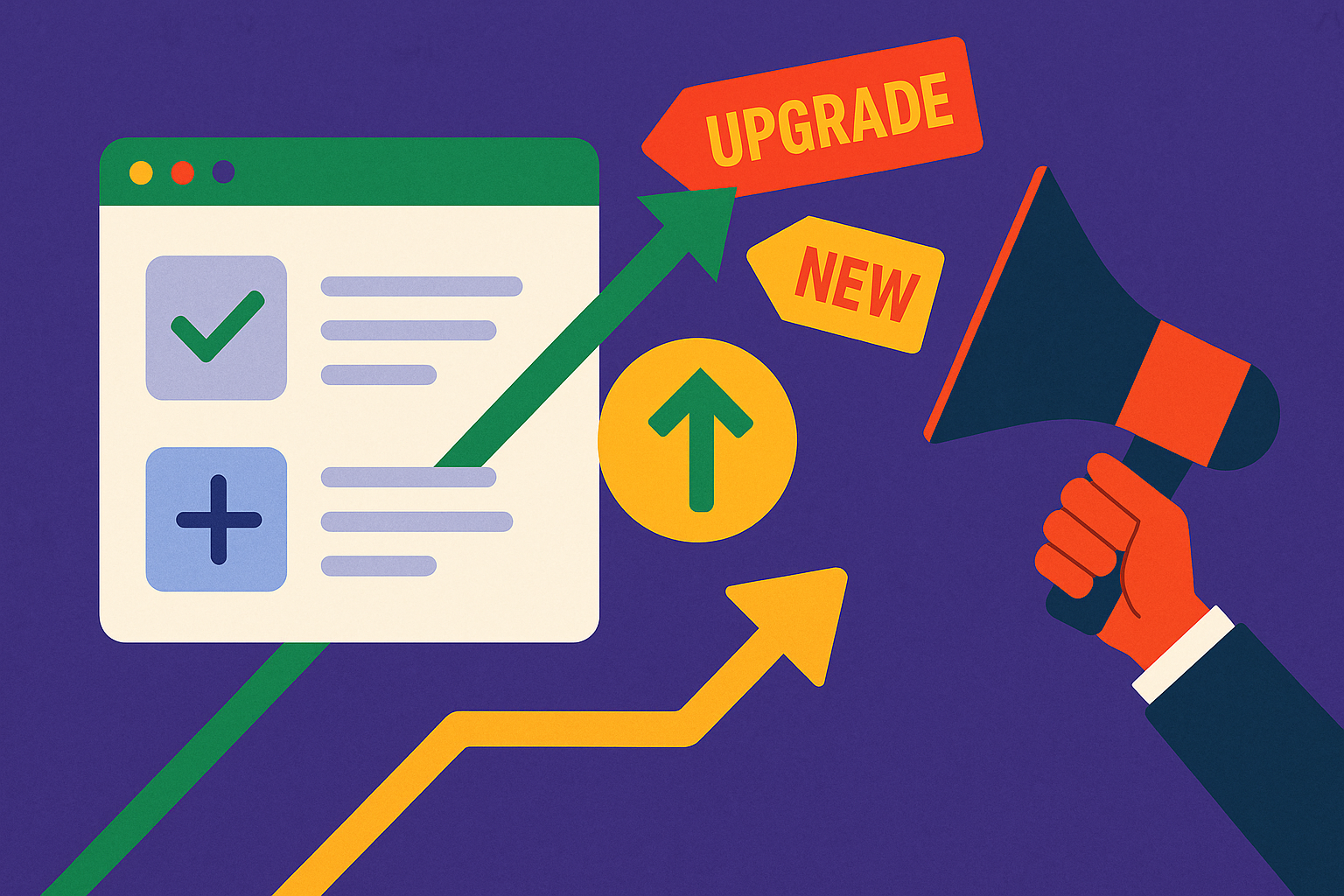By George Pu, CEO of SimpleDirect
October 6, 2025
After six years of building SimpleDirect's financing platform, I'm writing to share some important news: we're sunsetting SimpleDirect Financing.
For our existing customers with annual contracts, we'll honor every commitment through your expiration date (most through April 2026).
For month-to-month customers, service will continue through December 31, 2025. We'll support you through this transition—more details on that below.


But first, I want to share the full story. Not because we failed, but because we learned something valuable about building businesses, and I think it's worth sharing openly.
The Journey: 2019-2025
Back in 2019, I met my roommate's father, Benson Pan, in a basement apartment near the University of Waterloo.
Benson ran a small home improvement business in Richmond Hill, and he was frustrated. He kept losing projects to larger contractors who could offer financing.
His work was excellent, his prices were competitive, but he couldn't compete with the '0% financing' offers from bigger players.
That conversation sparked SimpleDirect.
We built a platform connecting contractors with multiple lenders - 13 integrations in total, including SoFi, Upstart, LightStream, and others.

We designed a beautiful mobile app (available on iOS and Android) that let salespeople send financing applications in minutes. We processed tens of thousands of loan applications and served 254 active contractors (overall 2,600 sign-ups) across 20+ states.
On the surface, it looked like we were building something meaningful. And in many ways, we were - just not a sustainable business.
The Truth About Unit Economics
Here's what we learned the hard way: at $1,500 per year, we couldn't afford to provide the level of service contractors and homeowners needed.
Let me break down the math:
Annual revenue per contractor: $1,500
Annual cost to serve:
- Customer support: $600-1,200
- Platform maintenance: $200
- Sales and marketing: $300
- General overhead: $200
Total cost: $1,300-1,900
Net margin: $0-200 (or negative)We tried to solve this with better technology - a more intuitive app, faster pre-qualifications, automated workflows. But the fundamental issue wasn't technology. It was that contractors expected white-glove service at self-service prices.
And honestly? They were right to expect it. Home financing is complex. Homeowners have questions. Contractors need hand-holding. That's the nature of the business.
We just couldn't afford to provide it at our price point.
The Customer Success Person Era (And What It Taught Us)
A few years ago, we hired a customer success person to lead customer success. He was personable, contractors loved him, and he genuinely wanted to help. But he had one fatal habit: he gave out his phone number to everyone.
Suddenly, every contractor expected phone support for every customer. Every homeowner expected a call to 'activate' their financing. What started as excellent customer service became an operational nightmare.
When we realized this, we made the hard decision to let him go. But the damage was done - the expectation was set. Contractors were accustomed to calling us for everything, and we couldn't scale that model without hiring a call center.
The lesson: You can't build a scalable SaaS business on a services business model. At least not at $1,500/year.
Why We're Actually Okay
Here's the part that might surprise you: SimpleDirect Financing was never our only bet.
Since 2019, our parent company ANC has been running a profitable consulting business. While we were experimenting with SimpleDirect Financing, ANC was serving clients, generating revenue, and building expertise across multiple domains.
SimpleDirect was a portfolio strategy - an R&D project that taught us deeply about:
- Embedded finance infrastructure
- Lender partnerships and compliance
- B2B2C business models
- Blue-collar market dynamics
- The importance of unit economics
We weren't betting the farm. We were exploring a market, learning from real customers, and building real technology. When it became clear the economics didn't work, we had the freedom to pivot.
This is the advantage of staying independent. No VC pressure to force a broken model to work. No obligation to chase growth at all costs. Just the freedom to make smart decisions.
The Bigger Pattern: Why Blue-Collar SaaS Is Hard
I want to share something I've been thinking about: we're probably not the only ones who will struggle with this model.
Companies like Hearth have raised $50M+ to build similar contractor financing platforms. On paper, they look more successful than us. But I suspect they're facing the same unit economics challenge - they're just masking it with venture capital.
Here's why blue-collar SaaS is uniquely difficult:
- Low tech adoption - Contractors don't naturally embrace new software
- High support needs - They prefer phone calls over documentation
- Price sensitivity - They can't afford enterprise pricing
- Relationship-driven - Trust matters more than features
- Slow decision-making - Long sales cycles, low conversion
The only players who make embedded finance work are those charging 9-15% dealer fees (like GreenSky) or targeting enterprise customers at $15k+/year (like some we won't name).
The middle market - where we were - is a death trap. You're too expensive for DIY self-service, but too cheap to afford white-glove support.
We're getting out before burning more time and money on a model that doesn't scale.
What's Next: SimpleDirect for Work
So what are we building now?
We're pivoting SimpleDirect into SimpleDirect for Work - an AI-powered infrastructure service for modern teams.
Why are we excited about this?
- Better market - We're targeting tech-savvy knowledge workers, not tech-averse contractors
- Better timing - We're early in the AI productivity wave (unlike late-entry embedded finance)
- Better economics - Self-service is actually possible with this audience
- Better fit - We're builders and developers, not call center operators
We've already launched SimpleDirect Chat in Beta, and we're shipping new features every week. Our first customers are loving it.
What This Means for You
If you're a contractor who's been using SimpleDirect Financing:
For annual contract holders:
- Your service continues through your contract expiration date
- All support will be provided via email (support@getsimpledirect.com)
- Phone support has ended effective immediately
- We'll help transition any active applications
For month-to-month customers:
- Service ends December 31, 2025
- We'll help migrate active customers to direct lender relationships
- Prorated refunds available upon request
For everyone:
- We're grateful for your partnership
- We'll maintain email support through your contract end
- We're here to answer questions and help with the transition
The Open Source Approach
Over the next few weeks, I'll be publishing an 8-part blog series sharing everything we learned about building embedded finance:
- The real cost of embedded finance (it's 10x what you think)
- The lender landscape (who offers APIs, who doesn't)
- Compliance (the minefield nobody warns you about)
- Integration lessons (what we learned from 13 lender APIs)
- Unit economics (why most models don't work)
- What we'd do differently (honest retrospective)
- Should you build embedded finance? (decision framework)
- Why blue-collar SaaS is a VC trap (predictions for the industry)
Why share this openly? Because we spent six years and learned these lessons the hard way. If our experience can save someone else time and money, that's worth more than keeping it proprietary.
And if you're building a vertical SaaS platform and need help implementing embedded finance? We're available for consulting. We know which lenders to partner with, what compliance requirements matter, and what pitfalls to avoid. Email me: george@getsimpledirect.com
Gratitude
To our 254 active contractors and thousands more registered customers: thank you. You trusted us with your businesses, gave us honest feedback, and helped us build something real.
To our lending partners (SoFi, Upstart, LightStream, Upgrade, and others): thank you for working with us and integrating with our platform.
To our team: thank you for believing in this vision and building something beautiful, even if it didn't scale the way we hoped. We are now going to off to build something even better.
To Benson Pan: thank you for that conversation in 2019. You sparked an idea that taught us more than we could have imagined.
The Real Lesson
We didn't fail. We learned.
We learned that product quality doesn't matter if unit economics don't work. We learned that beautiful design can't overcome fundamental business model flaws. We learned that some markets are just harder than others.
But most importantly, we learned the value of portfolio thinking and staying independent.
Because we had ANC's consulting business providing cash flow, we could experiment with SimpleDirect without betting everything. Because we never raised VC, we could sunset a product when it didn't work instead of forcing it to grow.
That's not failure. That's smart business.
Now we're taking everything we learned and building something better. SimpleDirect WorkOS is targeting the right market, at the right time, with the right business model.
We're still building in public. We're still shipping fast. We're still learning.
And we're more excited than ever about what's next.
If you want to follow our journey:
- Follow me on Twitter: TheGeorgePu
- Check out SimpleDirect WorkOS: getsimpledirect.com
- Questions? Email me: george@getsimpledirect.com
Thank you for being part of the SimpleDirect story. This chapter is closing, but the next one is just beginning.
George Pu
CEO, SimpleDirect
Toronto, Ontario, Canada
Interested in licensing the technology? Email george@getsimpledirect.com.
P.S. - To contractors reading this: I know this isn't the news you wanted. Change is hard, and I apologize for any inconvenience this causes. But I'd rather be honest about where we are than pretend everything's fine. You deserve transparency, and I hope you respect that we're making this decision proactively rather than letting the business deteriorate. Thank you for understanding.






